|
 Secure Site
Secure Site
|
 |
Archive for the 'Well-being' Category
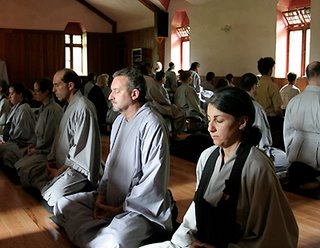 zen mountain monastery Across the country, hundreds of retreats, monasteries, cloisters, and abbeys located in out-of-the-way places—and some in unexpected city settings—offer sanctuary and stress relief to all who seek it. No matter which retreat you choose, one thing is universal to the experience: The tools needed to balance mind, body, and spirit come with the room.
Mark Perew, a Santa Ana, California, programmer, says he keeps returning to St. Andrews, a Benedictine abbey in Valyermo, California, because his visits change the way he views himself. “There I learned I can be by myself, but I don’t have to be alone,” he says. “The monks follow a regimen of prayer, singing, and silence. Entering into that pattern helps me get in tune with the spiritual presence.”
Although the motivations of sanctuary visitors are as unique as their personalities and histories, those who host them notice a common theme. “A word we often see written in our registry book is peace,” says Brother Raphael Prendergast of the Abbey of Gethsemani in Trappist, Kentucky.
The quiet, often remote settings allow for introspection, reconnection, stress relief, and a flowering of inherent wisdom. “Here guests get themselves back,” says Ryushin Marchaj, a senior monastic at Zen Mountain Monastery in Mt. Tremper, New York. “People recognize their own strength, their vastness, and their foibles.”
Most Zen monasteries begin and end every day with zazen, several hours of sitting meditation. Guests who have few opportunities for silence in their regular lives find this very powerful. Leslie Farmer, a journalist who stayed at Green Dragon Zen Monastery in Sausalito, California, says the meditation aspect gave her the sense she’d stepped into another culture. “This place had a peaceful atmosphere you can’t find at a hotel,” she says. Remeber to bring your Zen Timer for your mindufulness practice.
 green gulch zen monastery Finding Sanctuary
ABBEY OF GETHSEMANI
Trappist, Kentucky
(502) 549-3117; Monks.org
Thomas Merton spent twenty-seven years writing and becoming a spiritual master at this monastery in the Kentucky hills. Monks make meatless meals for guests at this silent retreat (speaking is permitted only in designated areas). Accommodations include private room and bath.
CASA DE MARIA
Santa Barbara, California
(805) 565-9062; LaCasaDeMaria.org
Two retreats in one, the interfaith center includes El Bosque and Ladera, both nestled in the foothills of the Santa Ynez Mountains overlooking the Pacific Ocean. Dormitory and private rooms and meals are available.
HOLY CROSS ABBEY
Berryville, Virginia
(540) 955-4383; HolyCrossAbbeyBrryvlle.org
At this Blue Ridge Mountain monastery, members of the Cistercian Order of the Strict Observance of Trappist Monks bake fruitcakes and make preserves, creamed honey, and fudge. Guesthouse accommodations are available.
PENDLE HILL
Wallingford, Pennsylvania
(800) 742-3150; PendleHill.org
This Quaker center for study and contemplation is set among woodland that includes 150 different tree species, an organic garden, and a straw bale greenhouse.
SAINT ANDREW’S ABBEY
Valyermo, California
(661) 944-2178; Valyermo.com
This Benedictine monastery and self-directed retreat center offers rooms and home-style food shared with the monastic community (silent breakfasts and dinners). Guests are welcome to join the monks in prayer and chanting.
ZEN MOUNTAIN MONASTERY
Mt. Tremper, New York
(845) 688-2228; MRO.org
Located on a nature preserve in the Catskill Mountains, this monastery offers several levels of visitation, from weekend introductions to Zen Buddhism to monthly meditation intensives. Guests must join the monastic community and are required to participate in all activities.
 Zen Chime Alarm Clock, zen meditatin timer
adapted from Natural Home Magazine, Jan/Feb 2005 by
Judith Stock
Now & Zen
1638 Pearl Street
Boulder, CO 80302
(800) 779-6383
Posted in Japanese Inspired Zen Clocks, mindfulness practice, Well-being
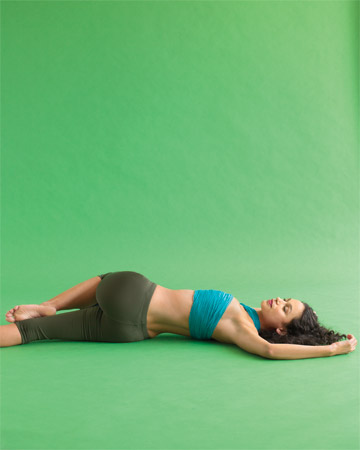 yoga, loosen up pose Saturday: Loosen Up
The sun’s out and the day’s wide open. Savor your Saturday by twisting away any residual tension in your back. It’s a delicious way to wake up — or even wind down after running around town.
Supported Reclined Twist
What It Does
Helps the whole body (hips, spine, digestive system, nervous system, shoulders, chest, etc.) unwind. Promotes digestion and detoxification.
How to Do It
Set your Zen Yoga Timer to gong after 5 minutes. Lie on your back, dropping your left knee across your body to rest on a pillow or blanket. Shift your hips right to avoid over-twisting the lower back.
Rest your arms, elbows soft, on the floor over your head. Turn your head in whichever direction feels most comfortable and breathe into this gentle stretch for 5 minutes on each side, until the gong chimes.
adapted from Body + Soul, 2010
 Zen Yoga Timepiece in Maple Now & Zen
1638 Pearl Street
Boulder, CO 80302
(800) 779-6383
Posted in Chime Alarm Clocks, Japanese Inspired Zen Clocks, Well-being, Yoga Timer, Yoga Timers by Now & Zen, Zen Timepiece by Now & Zen, Zen Timers
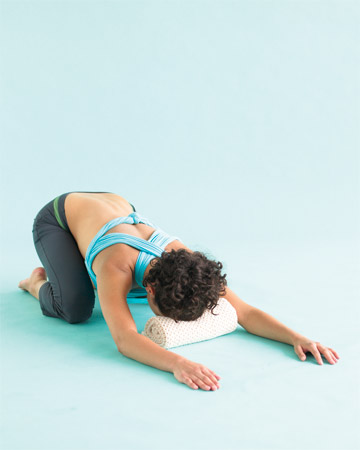 yoga, sooth frazzled nerves pose Friday: Soothe Frazzled Nerves
As another hectic workweek slows to a close, it’s time to downshift — and ramp up your self-care.
Friday’s pose quiets your mind and nervous system, restoring your inner resources so that you can fully enjoy the weekend ahead.
Supported Child’s Pose
What It Does
Releases the muscles in the back, gently opens the hips, boosts your energy.
How to Do It
Set your Zen Timepiece to gong after 5 minutes. Sit back on your heels with your legs folded under you and the tops of your feet on the floor. Open the knees wide and bend forward at the hips.
Rest your forehead (or your chest) on a pillow or blanket and keep your arms slightly bent. If your buttocks don’t reach your heels, place a blanket under your thighs. Relax and breathe deeply for 5 minutes, until your Zen Yoga Timer gongs.
adapted from Body + Soul, 2010
 Zen Timepiece with brass singing bowl, a yoga timer
Now & Zen
1638 Pearl Street
Boulder, CO 80302
(800) 779-6383
Posted in Bamboo Chime Clocks, Chime Alarm Clocks, Japanese Inspired Zen Clocks, Meditation Timers, Meditation Tools, Now & Zen Alarm Clocks, Well-being, Yoga Timer, Yoga Timers by Now & Zen, Zen Timepiece by Now & Zen, Zen Timers
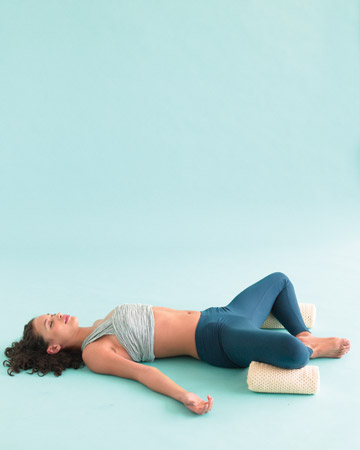 yoga get grounded pose Wednesday: Get Grounded
If a midweek slump has left you out of steam, get back on track by carving out a moment of calm. This easy reclining pose does just that, with an ultra-relaxing stretch that helps you get out of your head.
Supported Goddess
What It Does
Releases tight hips, stretching the groin muscles; connects you to the grounding energy of the root chakra, located at the base of your spine.
How to Do It
Set your Zen Yoga Timer for 5 minutes so that the chime will end your practice peacefully. Lie on your back with the bottoms of your feet touching and knees splayed to the sides, resting on pillows or rolled blankets. Feel your spine on the floor.
Place your palms on your belly or rest your arms out to the sides, palms up. Let your belly slowly rise and fall with each breath. Remain here for 5 minutes, or however long you like.
adapted from Body + Soul, 2010
 Digital Zen Yoga Timers Now & Zen
1638 Pearl Street
Boulder, CO 80302
(800) 779-6383
Posted in Bamboo Chime Clocks, mindfulness practice, Well-being, Yoga Timer, Yoga Timers by Now & Zen
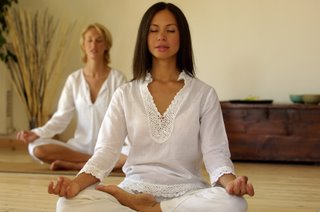 set a yoga timer for 5 or 10 minutes each day Monday is a mind-swirling blur. Tuesday sees a spike in stress levels, and Wednesday requires a Herculean effort just to get out the door. With a schedule as packed as yours, how can you create some bona fide breathing room?
The answer lies in slow, restorative yoga poses that you can do in just 5 to 10 minutes a day. Be sure to set your Zen Yoga Timer by Now & Zen to chime to end this quick yoga pose. “When you stay in a pose without exerting muscular effort, the fascia and ligaments, or connective tissues of your body, get a rare chance to stretch,” explains Noel Schroeder, a Boston-area yoga teacher and co-creator of the DVD “Notice Your Experience.” Stretching these supportive tissues also opens pathways of vital energy (known as “nadis” in the yogic tradition, or meridians in Chinese medicine) that run throughout the body.
Schroeder designed the following pose-a-day yoga plan as a powerful antidote to life’s daily stressors. Use it to ease into your day or to undo tension in the evening — or both.
adapted from Body + Soul Magzine, 2010
Use our unique “Zen Clock” which functions as a Yoga & Meditation Timer. It features a long-resonating acoustic chime that brings your meditation or yoga session to a gradual close, preserving the environment of stillness while also acting as an effective time signal. Our Yoga Timer & Clock can be programmed to chime at the end of the meditation or yoga session or periodically throughout the session as a kind of sonic yantra. The beauty and functionality of the Zen Clock/Timer makes it a meditation tool that can actually help you “make time” for meditation in your life. Bring yourself back to balance.
 Black Lacquer Zen Alarm Clock and Yoga Timer Now & Zen – Yoga Timer and Meditation Clock Store
1638 Pearl Street
Boulder, CO 80302
(800) 779-6383
Posted in Bamboo Chime Clocks, Well-being, Yoga Timer, Yoga Timers by Now & Zen
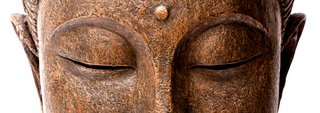 Buddha Maybe your next vacation should be a journey inward.
On the path to the hot springs at Tassajara Zen Mountain Center, I begin a kind of walking meditation, a continual awareness of what I am doing right now. Now I am crossing a footbridge to the baths, now I am taking off my flip-flops, now I am standing in front of an altar and reading the calligraphy: “With all beings/I wash body and mind/free from dust/pure and shining/within and without.”
“Guess my name,” says the little girl who shares the Japanese-style outdoor pool with me.
“Okay. Emma,” I say.
“Do you know her?” her mother asks, puzzled.
“No,” I say, “she just looks like an Emma.”
I’m not clairvoyant, but at retreat centers people converge in unexpected ways. Beyond the pool, past the sun-bleached sycamores on the far side of the creek, seven naked women in sun hats carefully wind their way upstream. There’s something mischievous about them as they wander in haphazard single file. I try to give them a context: Are they workshop participants hunting for wild mushrooms? Who knows? I think of the Zen notion of beginner’s mind, ready for anything, open to everything…and, silently, I thank Emma and the naked women for being here, for opening my mind.
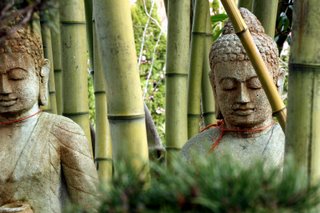 Buddhas In my mid-30s, I became an inveterate retreater. With two small kids, time to myself seemed a thing of the past. So I began to take week-long breaks, alone and seeking contemplation, at cabins, in farmhouses, on islands. Along the way, I discovered one retreat that offered me contemplation as a way of life shared by an entire community. Tassajara is the place I return to year after year.
Slowing way down is the first gift of Tassajara, and slow is the only way to drive the 14-mile dirt road that climbs through the Los Padres National Forest and over a 5,000-foot ridge of the Santa Lucia Mountains to the retreat. I stop and look down the steep descent through firs, sugar pines, tanbark oaks, and madrone into the canyon cut by Tassajara Creek. I exhale deeply, sloughing off my half-day drive south from San Francisco and a few layers of anxiety that have accumulated since my last visit here — the war and its threat to all of us with draft-age children, my divorce driving its way toward finality.
An open gate leads travelers to Tassajara, also known as Zenshin-ji (Zen Mind Temple), founded in 1966 by Japanese Soto Zen priest Shunryu Suzuki Roshi and the San Francisco Zen Center. The first Soto Zen monastery outside of Asia follows a traditional monastic schedule during the fall, winter, and early spring, then opens for guest season from late April through early September.
At Tassajara, where electricity is largely confined to the dining room and kitchen, cell phones don’t work, and a single public telephone is more trouble than it’s worth, guests are offered another way — the way of retreat. Here, the scheme of things is clear. One’s small place in it, uncomplicated.
 Digital Zen Alarm Clocks and Timers, available in maple, walnut, bamboo, and black lacquer Whether here or elsewhere, there are a number of ways to have a retreat. Retreats are times to turn inward, to quiet down, to let your own needs take precedence. At Tassajara, free from cars, buses, jobs, and family responsibilities, you simply bathe, eat, sleep, sit in meditation (or not, as you choose), swim, hike, read. You might venture to the massage kiosk to be kneaded, tapped, stretched, and unblocked. The day’s big excursion could be swimming some laps in the spring-fed creek-side pool, or hiking a mile downstream to a tumble of large boulders and small waterfalls you can ride down to the local swimming hole. Feeling more energetic, you might hike one of the trails — my favorite being up the mountain to the Wind Caves, where you can sit inside shallow, white-sand-floored pockets in the granite cliff face and behold the top of the world. You can return for the organic vegetarian meals, a cuisine pioneered by Tassajara’s Ed Brown and Annie Somerville, the chef of the Zen Center’s San Francisco restaurant, Greens.
Another way of visiting Tassajara is as a workshop participant. “Zen and Yoga” marks a turning point in my retreat life — a threshold to greater community, one that adds structure to my retreat time. With my daughter away at college and my teenage son spending every other week at his dad’s, I no longer crave alone time as I once did. Instead, I’m looking for ways to realign myself in relationship to others. In this context, retreat becomes an active verb.
My workshop takes place in the meditation hall, or zendo, where over the next three days we will examine how sitting meditation and the practice of yoga postures, or asanas, inform and enhance one another. I have brought my Zen Meditation Timer to end my meditation. It’s taught by Victoria Austin, a long-time Zen priest and yoga teacher who is also president of the San Francisco Zen Center. The afternoon we arrive, Victoria introduces us to the statue of a sitting Buddha that dominates the altar in the middle of the hall. When a fire destroyed the old zendo some years ago, the stone statue exploded into hundreds of pieces. Painstakingly reconstructed, the Buddha is almost exactly like the original, but not quite. “This Buddha is like practice itself,” Victoria reminds us. “You’re always putting yourself back together, each time a little differently.” I can relate to that; we all can. Practice reaches far beyond the yoga or meditation mat to include, ultimately, each moment of our waking lives.
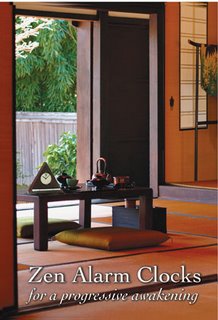 Tea Room with Zen Clock and Timer After restorative yoga, dinner, and an evening plunge in the hot springs, I’m as relaxed as I’ve ever been, in a comfy bed in my roomy turn-of-the-century cabin, lulled to sleep by the sound of water tumbling over creek stones. I’m awakened before dawn by the boom of a mallet striking a wooden block, calling the entire community to meditate in the zendo. An hour of sitting sorely reminds me of all the muscles it takes to sit that long, that straight. After temple cleaning, my workshop group continues with asana practice, all 25 of us spread out over the zendo, assuming Mountain, Tree, and Triangle poses, the Warrior series, and all the standing poses to fully awaken.
Famished, at breakfast I have a hard time choosing between the offerings: polenta with fresh strawberries, kiwis, and bananas, and the pancakes with raspberry compote. I sit at a table in the dining hall overlooking the creek with three women stem-cell researchers from Stanford University, a woman running for county supervisor, and a Minnesota man who founded a successful marketing firm. Busy lives and type-A personalities are a common bond for many people attracted to retreats.
Later that day, I talk to the gregarious guy from Minnesota. “I’m usually shy and standoffish, judgmental,” he admits to me, “but I decided to pay attention yesterday during sharing time.” He pauses to let a little cynical emphasis grin through. “I felt completely drawn to each story; it made me want to engage with everyone here.” I found myself wishing I’d done that. “Funny what’s possible,” he says.
It’s been a day of intense physical work, experimenting with yoga poses that help strengthen our meditation posture and focus our attention. Lying still, during Savasana, our last pose, Victoria says to us, “Let sounds come to you rather than pulling in the sounds.” I drift in and out, aware of the sound of footsteps on the gravel path, of the squawk of the ubiquitous blue jays, but most of all of our sighing — an ongoing chorus vocalizing the deep pleasure of exertion and release, a natural by-product of the primary work we are doing: following our breath in and out.
The next night at Victoria’s dharma talk, she compares the monks’ winter practice at Tassajara to one long breathing in, or refreshing the practice, and the summer guest season to a long breathing out, or giving to the larger community. I resolve to work on that out-breath.
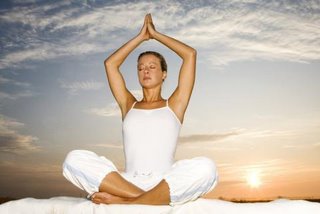 yoga Afterward the low light of kerosene lanterns dimly illuminates the path back to my cabin. I stop to watch the new moon rising above steep black slopes.
It is summer solstice night. Looking deeper, into the bright and scattered stars, I feel as if I’m standing in a roofless cathedral, buttressed by the Santa Lucias, part of some great force tilted upward in praise. My body tingles from the demands of the day, fledgling upper-back muscles awakened, all my cells celebrating in active communion. Attention. I whisper the word to myself, like an ancient secret. I raise my arms to the new moon in thankful salutation, take a long breath in, and sigh it westward, down the path of the year’s longest day.
For reservations call (415) 865-1895 or visit sfzc.org/tassajara/.
Adapted from Body + Soul, April/May 2005
Posted in Bamboo Chime Clocks, Hot Springs, Japanese Inspired Zen Clocks, Meditation Tools, mindfulness practice, Now & Zen Alarm Clocks, Well-being, zen monks
When you apply a few simple techniques, you can turn your daily walk into a rewarding practice.
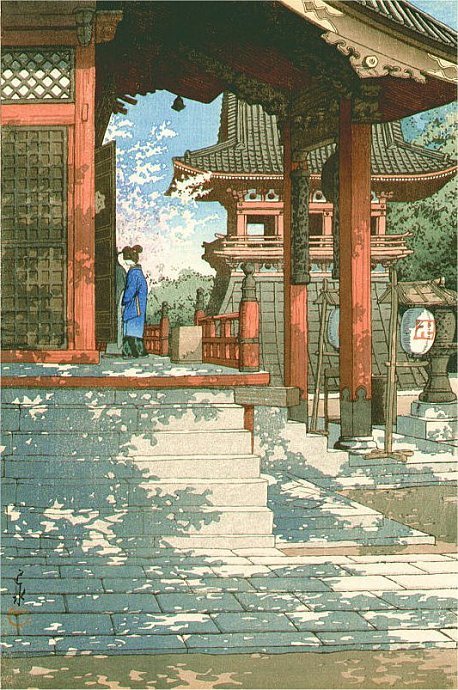 Hasui-b, Meguro Fudo What is mindful walking? It’s a technique that uses awareness of the mind/body connection to improve the quality of your walking experience on all levels. By approaching a walk in a mindful way, you make it a practice like yoga, meditation, or tai chi; every session brings new insights and challenges. As in yoga, you think about your body position, breathing, movements, and awareness, turning inward and outward at the same time. You’re working to get fit, and to improve your life as a whole. Treat walking as a practice, and it will become not only something you do with your legs but also a way to bring your mind, body, and spirit into balance.
Five Steps to Make Walking a Mindful Practice
- Identify your intention. The key to any mindful activity, intention provides focus and motivation, elevating your practice from routine to ritual. What is your intention? To walk for an hour every day? To develop a sense of centeredness and calm? To reduce stress? Your goals and intentions will evolve as you evolve. Let them, as long as they keep you in line with your higher sense of purpose — and keep you moving forward.
- Be consistent. A true practice requires ongoing attention. Of course, it’s natural to feel resistant at times, no matter what kind of activity you do. Your mind will create a thousand excuses not to walk today. Don’t let these passing thoughts distract you from your deeper intention. Get moving; start walking around your office or home, or wherever you are. You can quiet the mind by moving your body and get yourself back on track.
- Train your mind to focus. The mind loves — and craves — engagement. Without something to focus on, it will tend to wander, taking your practice with it. By learning to focus, you will be able to walk more efficiently.
- Listen to your body. As with any relationship, the connection between mind and body depends on how well one listens to the other. Our tendency is to try to rule the body with the brain; however, they are more like equal partners, offering feedback and direction as you go. Listen to what your body is trying to tell you by noticing any sensations that come up while you’re walking. You may feel energized as your leg muscles engage or relaxed as your breathing deepens. If you detect any complaint from your body, such as pain or discomfort, identify the source. Then make small adjustments in your technique and see whether the sensation lessens.
- Embrace the process. Goals provide a greater context for your practice. But building patient awareness of the process is even more important. Sometimes walking will feel easy and rewarding; other times, more like a chore. As part of a mindful practice, you accept the challenge as part of the process and continue to stick with it. My tai chi master sees difficulty as an opportunity — a lesson to be learned. Accepting all of these parts of the process lies at the heart of making walking a mindful exercise.
adapted from Body + Soul April/May 2006
 Digital Zen Alarm Clocks, meditation timers and alarm clocks with chimes
Now & Zen
1638 Pearl Street
Boulder, CO 80302
(800) 779-6383
Posted in Bamboo Chime Clocks, Goodness, Meditation Timers, Meditation Tools, mindfulness practice, Now & Zen Alarm Clocks, Well-being
 stillness of being Geidō refers to the way of the traditional Japanese arts: Noh (theater), kadō (Japanese flower arrangement), shodō (Japanese calligraphy), Sadō (Japanese tea ceremony), and yakimono (Japanese pottery). All of these ways carry an ethical and aesthetic connotation and appreciate the process of creation.
To introduce discipline into their training, Japanese warriors followed the example of the arts that systematized practice through prescribed forms called kata – think of the tea ceremony.
adapted from wikipedia.org
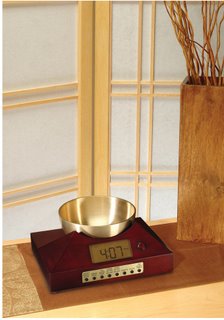 Zen Timepiece, a bowl/gong alarm clock and timer in cherry finish Now & Zen
1638 Pearl Street
Boulder, CO 80302
Posted in Chime Alarm Clocks, Japanese Inspired Zen Clocks, Meditation Tools, mindfulness practice, Now & Zen Alarm Clocks, Progressive Awakening, Well-being, Yoga Timer, Yoga Timers by Now & Zen
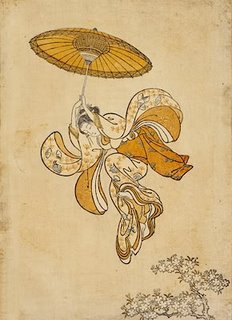 Harunobu Ukiyo-e Print, Girl Parachuting Into the Branches of a Flowering Cherry this world of dew
is yes, a world of dew
and yet…
-issa kobayshi-
 Black Lacquer Zen Alarm Clock and Meditation Timer
Now & Zen
1638 Pearl Street
Boulder, CO 80302
Posted in Japanese Inspired Zen Clocks, Japanese Poetry, Meditation Timers, Meditation Tools, mindfulness practice, Natural Awakening, Now & Zen Alarm Clocks, Well-being, Yoga Timer, Zen Timers
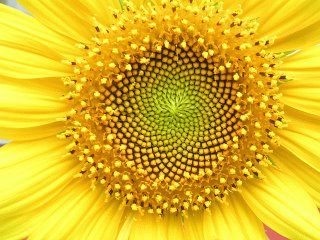 sunflower “The more complex a being is, so our Scale of Complexity tells us, the more it is centered upon itself and therefore the more aware does it become. In other words, the higher the degree of complexity in a living creature, the higher its consciousness; and vice versa. The two properties vary in parallel and simultaneously. If we depict them in diagrammatic form, they are equivalent and interchangeable.“
–Pierre Teilhard de Chardin, The Future of Man–
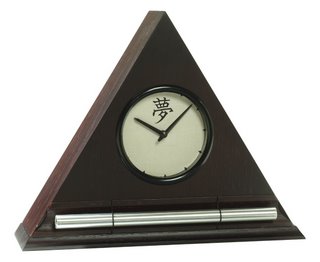 Dream Kanji Zen Alarm Clock with Chime in Dark Oak Finish
Now & Zen
1638 Pearl Street
Bouder, CO 80302
Posted in Chime Alarm Clocks, Well-being, Yoga Timer, Zen Timers
« Previous Page — « Previous Entries
Next Entries » — Next Page »
|
|
|
|